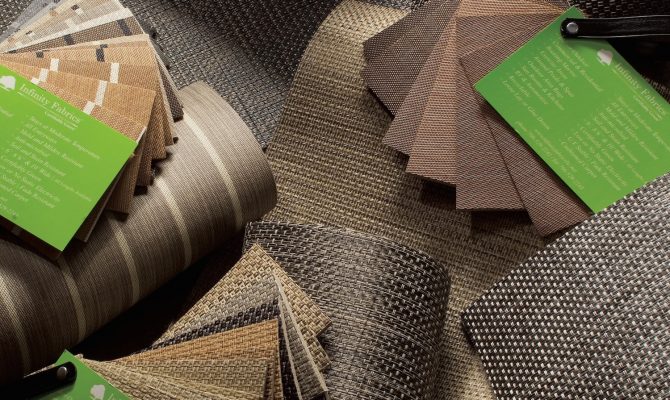We all know that boats need regular attention to keep them in good condition and to allow for trouble-free days on the water. But aside from routine maintenance, there are a number of simple DIY projects that almost anyone can do that will not only enhance your boating experience but also improve the esthetics, longevity and value of your craft. We asked experts in five product areas for their input on easy ways to spruce up an old boat and make it more enjoyable. Here’s what they had to say.
Replacing the Carpet
Warren McCrickard of Infinity Fabrics had a few suggestions for those considering replacing their carpeting. His first tip: Get rid of carpet altogether and replace it with a newer product such as woven vinyl, which is soil and stain resistant, easy to clean and contains UV inhibitors for better color retention.
While much more durable than carpeting, according to McCrickard, not all vinyl flooring is created equal. He said it’s important to make sure the product is of a good quality and has a dense cushion backing attached. Thinner, lesser-quality backings can retain water, ultimately causing mold and mildew.
Aside from material and manufacturing quality, color and style should be considered. A common mistake is “falling in love with the first color you see,” said McCrickard. With a wide variety of colors and patterns offered, there’s bound to be a perfect fit to your boat’s particular color scheme. Ask for samples and try them out on board.
Installation is simple. You can glue the vinyl flooring down or cut it to shape, hem it and add snaps. In either case, remember to double-check all measurements before cutting — measure twice, cut once. If you need to seam an area, lay the two pieces with one overlapping the other and then cut through both. Doing so will assure a flawless seam.
If gluing, make sure the surface is smooth and even by cleaning and removing as much of the old glue as possible. If using snaps, install the male-end fasteners last, once the carpet is in place, so the snaps line up perfectly.
Renewing the Canvas
The canvas tops and covers found on most boats will weather, fade and shred over time. Replacing them can take years off the appearance of a boat and give it a new look.
Carie Bores of Great Lakes Boat Tops said her company offers foolproof canvas replacement. Being the provider of factory OEM canvas for a wide range of manufacturers, chances are it already has the patterns for your boat and can produce new canvas at a fraction of the cost of custom work. All that’s needed is your vessel model, year and VIN number; Great Lakes can then produce whatever canvas you need in whatever color you choose, shipping it within five to 10 business days. You can do the mounting yourself, or a local installer can be scheduled.
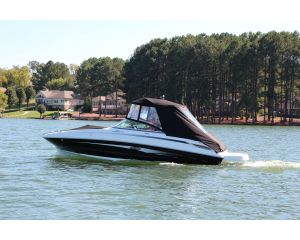
Side Curtains from Great Lakes Boat Top
To keep your canvas in good shape, Bores recommended hand-washing it thoroughly and letting it air-dry. (Never use a washing machine or dryer.) Once dry, apply a good waterproofing to both sides. Doing this annually will prolong the canvas’s life and help it shed water.
The most common cause of damaged canvas covers, said Bores, is lack of tension and support. The correct use of poles or a suspension device such as Hangtyte will assure a long life. “A gallon of water weighs eight pounds, and that can end up being a lot of weight stressing the canvas,” said Bores. “If the canvas sags and collects water, it’s just a matter of time before snaps and seams give way.”
With proper tension, waterproofing and care, your new canvas should last for years to come.
Switching to LEDs
LED lighting is more popular than ever, and there’s little doubt that “switching over” will help improve the look of your boat while also conserving power. However, warned Phil Haynie of Hella Marine, simply changing out the existing bulb to an LED bulb is not recommended. Tungsten fixtures are designed to reflect a light that’s radiated from all around the bulb, but LED light is more directional, with light radiating from a small point or points. Therefore, an LED bulb in a tungsten fixture will result in bright and dim spots with uneven cast. This might be OK in storage lockers and small areas that aren’t often used, but areas such as salons, cabins and heads should have LED fixtures installed.
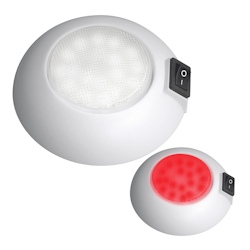
LED Cabin Lights from Defender
Haynie also advised to take the “coolness” of the light into account, which refers to the blue tint that many LED lights have. A kelvin rating of 3,500 to 4,000 will indicate a “warm” light, similar to a tungsten bulb, and a higher kelvin rating will be a truer, whiter light. If your boat has a lot of wood or wood tones, a warmer LED will be more pleasing and will bring out the depth of the wood and varnish, according to Haynie. On the other hand, if your boat has a lot of white and lighter colors, then true white LED lights will help accentuate the interior.
If you’re contemplating replacing your navigation lights for LED, Haynie strongly suggested replacing the whole fixture rather than just the bulb. Fixtures are not USCG approved unless tested with an LED bulb, and, to Hanyie’s knowledge, none have been tested. He said the LED bulb might not give the same light patterns and angles as the original bulb. Replacing the whole navigation light fixture will assure fully compliant lighting.
Eliminating Odors
Lets face it, at one time or another we’ve all wished we could get rid of a bad boat smell, whether a ripe head, a stinky bilge or a musty odor from time in storage. Well, Kristen Dettbarn of Kanberra Gel has a solution.
She suggested placing Kanberra Gel containers aboard during winterization as a preemptive measure. The product is made up of pure Australian tea oils that are suspended in water, enabling them to transfer to the air, where they are then able to neutralize odors. Kanberra Gel does all this with no scent-making perfumes; all you smell is clean air.
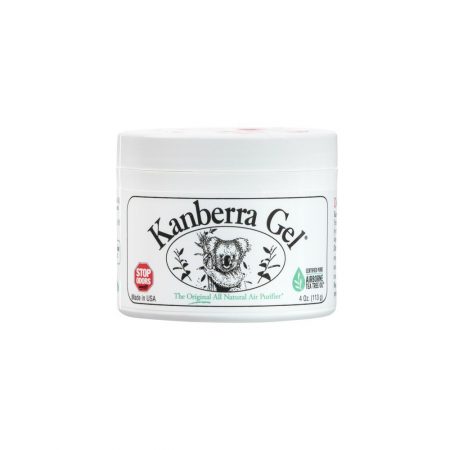
When it’s cold enough, the water in the Kanberra Gel freezes but will thaw again and continue releasing mold-spore-fighting tea tree oils once temperatures warm again. Even after the container is empty, the residual oils in the air can last for another 45 days.
Kanberra Gel comes in containers from 1 to 16 ounces. Dettbarn said a good guideline to use is one ounce for every 100 square feet of coverage area. Placed on a flat surface with the diffuser lid in place, the gel can last anywhere from three to eight weeks before emptying, depending on airflow and conditions.
Dettbarn warned that not all tea tree oil products are the same, saying that other companies can make their products with what they call “nature identical” synthetic oils that contain only a small amount of the 100-plus components found in Kanberra’s natural oils. Kanberra also offers oils in spray bottles and wipes for all odor-eliminating needs.
Upgrading the Trailer
When fixing up your boat, don’t forget the trailer it that gets it to and from the ramp throughout the season. Renee Mason from Shoreland’r Trailers recommended that owners go to the company website (www.shorelandr.com) for some great maintenance tips and guidelines on how to inspect your trailer for potential issues.
Two of the simplest yet most important guidelines are to check for loose nuts and lugs and to inspect your tires for wear or damage. Mason also recommended that owners pack the bearings yearly (instructions for doing so can be found on the Shoreland’r website) and that they buy a spare tire if they don’t already have one. “It will save hassle during a trip, because some trailer tires aren’t as easy to find,” she said.
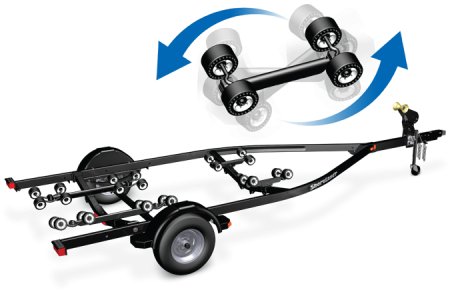
Shorelandr Trailer
If your trailer is older than the average lifespan of seven years and is showing cracks or rust holes in the frame or axle, then it’s time for a new trailer. The Shorland’r site can provide a perfect match for your boat. Then, you can hitch her up and go enjoy the rest of the season knowing that your old boat is ready for another year (and more) of creating great memories.
Originally published in Heartland Boating Magazine
Author: Glenn Hayes

